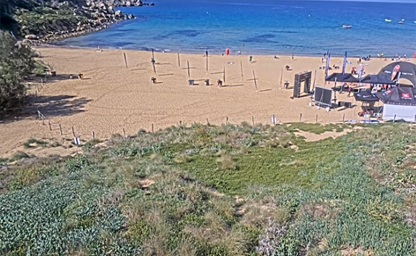
Golden Bay
Locally known as Ir-Ramla tal-Mixquqa

Locally known as Ir-Ramla tal-Mixquqa
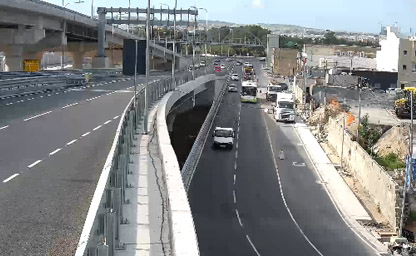
Located just 5km from the capital Valletta

The climate is warm and healthy

The Maltese archipelago consists of three islands: Gozo, Malta and Comino

Surely if one turns around St. Lucia one will not see any old buildings
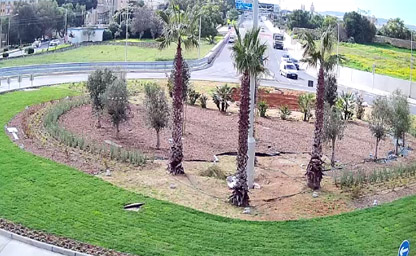
You come across a small church that was built on a piece of land of the Cathedral of Malta

The shoreline, which is 137 kms long, has many bays and harbours
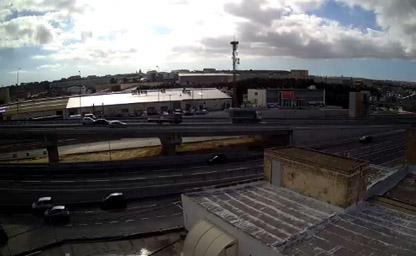
The shoreline, which is 137 kms long, has many bays and harbours
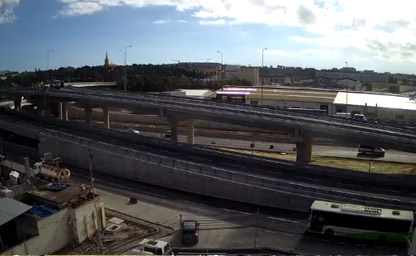
There are no biting winds, fog, snow or frost
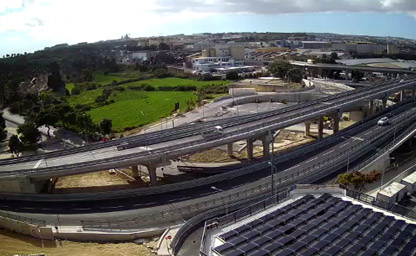
Marsa can be a fascinating setting for a truly memorable vacation
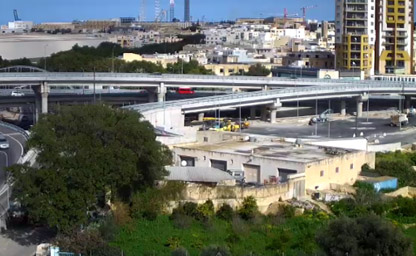
The countryside is greener and more spectacular
Embark on a virtual journey to the enchanting archipelago of Malta, where history, culture, and natural beauty converge in a captivating tapestry. In this digital voyage, we will explore the Maltese islands through the lens of webcams, offering a real-time glimpse into the heart of the Mediterranean.
Our digital exploration begins in Valletta, the capital city known for its historic grandeur and architectural marvels. Webcams strategically placed in key locations allow us to witness the charm of Valletta's streets, where centuries-old buildings stand as silent witnesses to the island's rich past.
The live feeds capture the buzz of daily life in Valletta, from locals exploring the vibrant markets to tourists immersing themselves in the city's cultural treasures. Let the digital lens guide you through Valletta's timeless beauty, where every cobblestone tells a story.
Shift your gaze to Malta's picturesque coastlines as webcams offer a panoramic view of the island's shores. Whether it's the rugged cliffs of Dingli, the sandy beaches of Golden Bay, or the hidden coves waiting to be discovered, the live feeds showcase Malta's diverse coastal beauty.
Immerse yourself in the azure waters virtually, and experience the ebb and flow of the Mediterranean against the backdrop of iconic landmarks. The digital lens invites you to savor the coastal panorama that defines Malta's allure.
Extend our digital voyage to Malta's sister islands, Gozo and Comino, through strategically placed webcams. Explore the rural charm of Gozo, where rolling hills and quaint villages come to life on your screen. Traverse the crystal-clear waters surrounding Comino, home to the famous Blue Lagoon, and witness the dance of sunlight on the sea.
The live feeds provide glimpses into the unique character of each island—the historic citadel of Victoria on Gozo or the secluded beaches of Comino. Let the digital lens be your guide to the archipelago wonders that make Malta a destination of discovery.
Our virtual journey takes us to Mdina, the ancient fortified city that whispers tales of a bygone era. Webcams offer views of narrow streets, medieval architecture, and the imposing Mdina Cathedral. Experience the cultural richness of Malta as the live feeds capture traditional festivals, local events, and the warm hospitality of the Maltese people.
The digital lens becomes a portal to cultural treasures—the intricate designs of St. John's Co-Cathedral, the solemn processions during religious celebrations, and the lively atmosphere of local markets. Malta's cultural heritage unfolds in every frame.
As our virtual odyssey continues, we explore the natural beauty of Malta's landscapes. Webcams showcase Ghajn Tuffieha, a pristine sandy beach surrounded by cliffs and lush vegetation. The live feeds invite you to bask in the sun's warmth and the tranquility of the Mediterranean breeze.
Extend your virtual exploration to Malta's countryside, where the digital lens captures the rural charm, meandering pathways, and the unique geological formations that dot the island. Let the beauty of Malta's natural landscapes be a soothing visual escape.
As our digital odyssey through Malta concludes, the webcams have unfolded a rich narrative of historic cities, coastal panoramas, sister island wonders, cultural treasures, and natural beauty. Whether wandering through Valletta's streets, savoring coastal vistas, or exploring the cultural richness of Mdina, Malta's charms come alive through the pixels on your screen.
Let this virtual journey be an invitation to discover the magic that Malta holds—a destination where history, culture, and natural wonders blend seamlessly, and where each webcam frame tells a story of an island proud of its heritage and embraced by its beauty.
Malta, a small but historically rich island nation in the Mediterranean Sea, has a past that stretches back thousands of years. Its strategic location between Europe and North Africa has made it a crossroads of civilizations, influencing its culture, language, and architecture.
The earliest evidence of human habitation in Malta dates back to around 5900 BCE, when Neolithic settlers from Sicily arrived on the islands. These early inhabitants left behind some of the most remarkable prehistoric structures in the world, including the megalithic temples of Ħaġar Qim, Mnajdra, and Ġgantija, which predate even the Pyramids of Egypt. These UNESCO World Heritage Sites reveal the advanced architectural and religious practices of Malta’s early civilization.
By 1000 BCE, the Phoenicians, skilled seafarers from present-day Lebanon, established trading outposts in Malta, turning it into an important maritime hub. The Carthaginians later took control, followed by the Romans in 218 BCE. Under Roman rule, Malta prospered, and Christianity was introduced to the island in 60 CE when Saint Paul was shipwrecked there. This event is considered a turning point in Maltese religious history, as Malta remains one of the most devoutly Catholic nations in Europe today.
Following the fall of the Roman Empire, Malta was ruled by the Byzantines before falling to the Arabs in 870 CE. The Arab influence on Malta was significant, shaping its language, agricultural techniques, and fortifications. Many Maltese words today still have Arabic roots. In 1091, the Normans, who had conquered Sicily, took control of Malta, integrating it into the Kingdom of Sicily and laying the foundations for a Latin Christian society.
The medieval period saw various European powers ruling Malta, but its most famous rulers arrived in 1530. The Knights of St. John, a Christian military order, were granted the islands by the Holy Roman Emperor Charles V. The Knights, known as the Knights of Malta, transformed the island into a formidable fortress against the Ottoman Empire. In 1565, they famously repelled the Great Siege of Malta, when the Ottomans attempted to invade. This victory cemented Malta’s reputation as a stronghold of Christianity in the Mediterranean.
During their rule, the Knights built the impressive city of Valletta, which became the capital in 1571. Named after Grand Master Jean Parisot de la Valette, Valletta is a masterpiece of Baroque architecture and remains one of the most well-preserved historic cities in Europe. The Knights ruled Malta for over 250 years, but in 1798, Napoleon Bonaparte’s French forces seized the island. However, the Maltese, with British assistance, rebelled against the French, leading to Malta becoming a British protectorate in 1800.
Under British rule, Malta played a crucial role in both World War I and World War II. Due to its strategic location, it served as a vital naval base, and during World War II, Malta endured relentless bombing by Axis forces. The bravery of the Maltese people during this period was recognized when King George VI awarded the George Cross to the entire nation in 1942. The George Cross remains a symbol of Malta's resilience and appears on the country’s flag.
Malta gained independence from Britain on September 21, 1964, and became a republic in 1974. In 2004, it joined the European Union, further cementing its place in modern Europe. Today, Malta is known for its rich heritage, vibrant culture, and stunning landscapes, making it one of the most sought-after travel destinations in the Mediterranean.
Malta enjoys a Mediterranean climate, characterized by hot, dry summers and mild, wet winters. The climate makes it an ideal year-round destination, attracting visitors seeking both relaxation and adventure.
Summers in Malta, from June to September, are hot and sunny, with average temperatures ranging from 25°C to 35°C (77°F to 95°F). July and August are the hottest months, with temperatures often exceeding 35°C (95°F). Rainfall is rare during summer, and the long daylight hours make it perfect for beach activities, boat trips, and sightseeing.
Autumn, from October to November, sees a gradual cooling of temperatures, ranging between 18°C and 25°C (64°F to 77°F). While occasional rain showers occur, the sea remains warm enough for swimming well into November.
Winters in Malta, from December to February, are mild compared to mainland Europe. Average temperatures hover between 10°C and 17°C (50°F to 63°F). Rainfall is more frequent during these months, but snow is virtually unheard of. Despite the cooler weather, Malta remains lively, with festive events such as Christmas markets and carnival celebrations.
Spring, from March to May, is one of the best times to visit Malta, as the weather is warm but not too hot, ranging from 15°C to 23°C (59°F to 73°F). Wildflowers bloom across the countryside, and outdoor activities such as hiking and exploring historical sites are particularly enjoyable.
The sea temperature remains warm for most of the year, ranging from 16°C (61°F) in winter to 27°C (81°F) in summer, making Malta a paradise for divers and water sports enthusiasts.
Malta is a small island nation located in the central Mediterranean, about 93 kilometers (58 miles) south of Sicily and 288 kilometers (179 miles) north of Africa. The country consists of three main islands: Malta, Gozo, and Comino. The total land area is just 316 square kilometers (122 square miles), making it one of the smallest countries in the world.
The main island, Malta, is the cultural and economic center, home to Valletta, Mdina, and bustling towns such as Sliema and St. Julian’s. The island features a rugged coastline with dramatic cliffs, natural harbors, and beautiful sandy beaches. The Dingli Cliffs, the highest point in Malta, offer breathtaking views of the Mediterranean.
Gozo, the second-largest island, is more rural and traditional. Known for its lush landscapes, quaint villages, and historical sites, Gozo is famous for the Ġgantija Temples, one of the oldest freestanding structures in the world. The island’s coastline features spectacular formations such as the Blue Hole, a popular diving spot.
Comino, the smallest of the three inhabited islands, is best known for the Blue Lagoon, a stunning turquoise bay that attracts visitors from around the world. The island has no cars and only one hotel, making it a peaceful retreat.
Malta’s landscape is characterized by limestone rock formations, caves, and fertile valleys. Despite its small size, the country boasts a diverse range of natural attractions, including the stunning Wied il-Mielaħ Window, a natural rock arch that has become an alternative landmark after the famous Azure Window collapsed in 2017.
The island nation has limited freshwater resources, with no permanent rivers or lakes. Most of its water supply comes from desalination plants and underground reservoirs. The agricultural sector relies on terraced fields and irrigation, producing crops such as tomatoes, potatoes, and citrus fruits.
Travel Tip: For a unique experience, visit Mdina, the "Silent City," at night. The ancient streets are beautifully illuminated, creating a magical atmosphere that transports you back in time. It’s the perfect way to explore Malta’s medieval charm without the crowds.
Interesting Fact: Malta is home to the world’s oldest free-standing temples, which are even older than Stonehenge and the Pyramids of Egypt. The Ġgantija Temples on Gozo date back to around 3600 BCE, making them some of the most significant prehistoric monuments in the world.